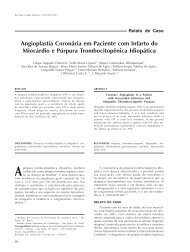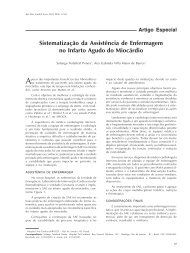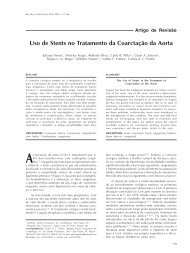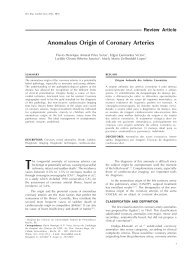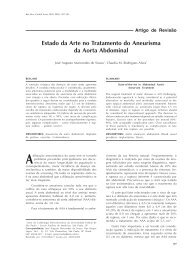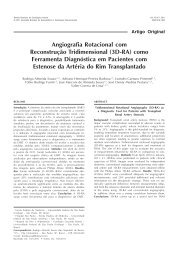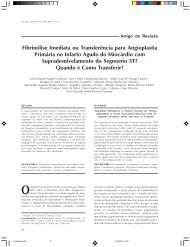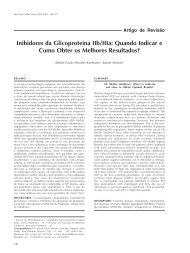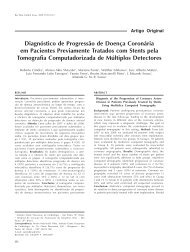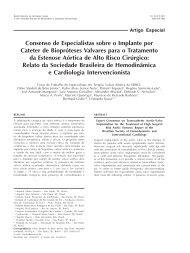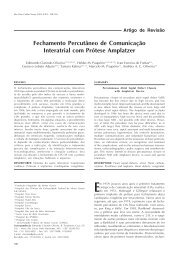10 a 12 de junho de 2009 10 a 12 de junho de 2009 - Revista ...
10 a 12 de junho de 2009 10 a 12 de junho de 2009 - Revista ...
10 a 12 de junho de 2009 10 a 12 de junho de 2009 - Revista ...
Create successful ePaper yourself
Turn your PDF publications into a flip-book with our unique Google optimized e-Paper software.
Prêmio Melhor Tema livre - Julgamento Eletrônico - Intervenção Extracardíaca - Apresentação Oral023ENDOVASCULAR TREATMENT OF TYPE B AORTIC DISSECTION,LATE FOLLOW-UPCLAUDIA M. R. ALVES, JOSÉ HONÓRIO PALMA DA FONSECA,JOSÉ AUGUSTO M. SOUZA, HYUNG CHUN KIM, GUILHERME ESHER,DIEGO GAIA, ANTONIO CARLOS C. CARVALHO, ENIO BUFOLLO,ESCOLA PAULISTA DE MEDICINA – UNIFESP / HOSPITAL DO CORAÇÃOASSOCIAÇÃO DO SANATÓRIO SÍRIOSAO PAULO, BRAZIL32Background: Thoracic endovascular aortic repair (TEVAR) of type B-aortic dissection(TBAD) is a therapeutic option for selected patients. However, late outcomes of thisintervention are virtually unknown.Methods: From 1999 to 2004, <strong>10</strong>6 patients exclusively with classic complicated orsymptomatic TBAD (excluding variants, ulcer or intra mural hemathoma) weretreated with TEVAR, using the same <strong>de</strong>vice. We present in-hospital outcomes andlate follow-up for 73 patients.Results: Technical success was 99% and clinical success rate was 83%.In-hospital<strong>de</strong>ath occurred in 5 patients, two of them after surgical conversion. Three patientsrequired urgent surgical conversion. Neurologic complications occurred in 5 patients(1 case of paraplegia). The average time of follow-up was 35.9±28.5 months and37% of those patients initially successfully treated reached a failure criterion.Kaplan-Meier curve showed late survival rates above 80% in 2 years.Conclusion: Patients with both acute and chronic TBAD had excellent initial resultswith TEVAR. Although event-free survival rates <strong>de</strong>creased gradually with time dueto the frequent need of new interventions, survival curves were comparable to thoseof less complex patients submitted to clinical or surgical treatment.



